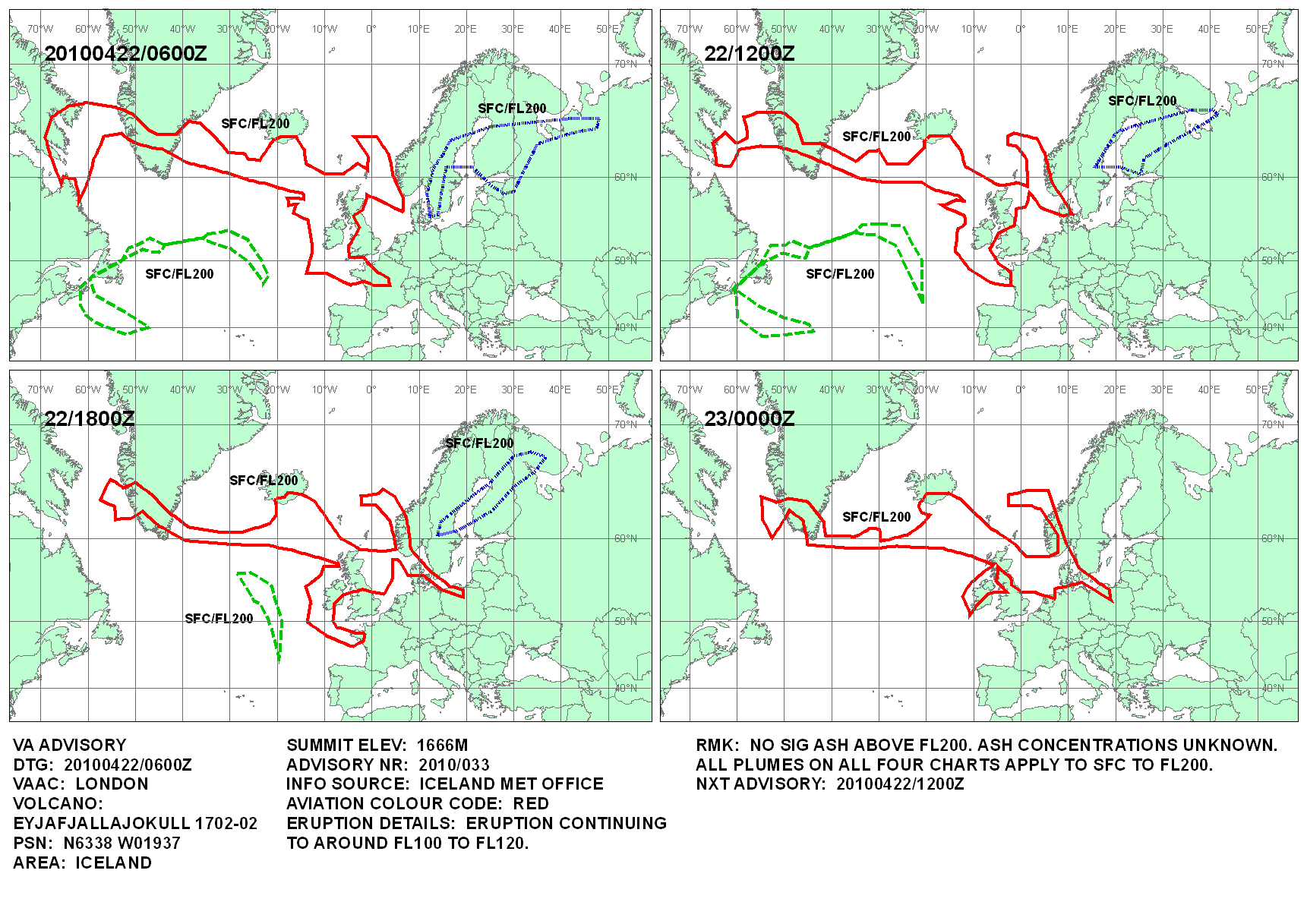UK’S INDEPENDENT AVIATION REGULATOR ISSUES GUIDANCE TO OPEN AIRSPACE WITH SAFETY RESTRICTIONS
The Civil Aviation Authority (CAA), the UK’s independent specialist regulator with oversight of aviation safety, today issues new guidance on the use of airspace. This is issued in conjunction with the Irish Aviation Authority (IAA) and covers the Anglo Irish Functional Airspace Block (FAB).
The new guidance allows a phased reintroduction from 2200 tonight of much of the airspace which is currently closed due to the volcanic ash plume over the UK. There will continue to be some ‘no fly zones’ where concentrations of ash are at levels unsafe for flights to take place, but very much smaller than the present restrictions. Furthermore, the Met Office advise that the ‘no fly zones’ do not currently cover the UK.
“Making sure that air travellers can fly safely is the CAA’s overriding priority.
“The CAA has drawn together many of the world’s top aviation engineers and experts to find a way to tackle this immense challenge, unknown in the UK and Europe in living memory. Current international procedures recommend avoiding volcano ash at all times. In this case owing to the magnitude of the ash cloud, its position over Europe and the static weather conditions most of the EU airspace had to close and aircraft could not be physically routed around the problem area as there was no space to do so. We had to ensure, in a situation without precedent, that decisions made were based on a thorough gathering of data and analysis by experts. This evidence based approach helped to validate a new standard that is now being adopted across Europe.
“The major barrier to resuming flight has been understanding tolerance levels of aircraft to ash. Manufacturers have now agreed increased tolerance levels in low ash density areas.”
Our way forward is based on international data and evidence from previous volcanic ash incidents, new data collected from test flights and additional analysis from manufacturers over the past few days. It is a conservative model allowing a significant buffer on top of the level the experts feel may pose a risk.
In addition, the CAA’s Revised Airspace Guidance requires airlines to:
· conduct their own risk assessment and develop operational procedures to address any remaining risks;
· put in place an intensive maintenance ash damage inspection before and after each flight; and
· report any ash related incidents to a reporting scheme run by the CAA.
The CAA will also continue to monitor the situation with tests both in the air and on the ground.
NOTES TO EDITORS:
1. The CAA’s Revised Airspace Guidance will be based on new engine ash tolerance levels and will apply to low ash density areas identified by the Met Office. This information will be circulated on a six hourly basis. Airspace where eash levels exceed this new limit will be no fly zones.
2. The CAA is the UK's specialist aviation regulator. Its activities include: making sure that the aviation industry meets the highest technical and operational safety standards; preventing holidaymakers from being stranded abroad or losing money because of tour operator insolvency; planning and regulating all UK airspace; and regulating airports, air traffic services and airlines and providing advice on aviation policy from an economic standpoint.
http://www.caa.co.uk/application.aspx?catid=14&pagetype=65&appid=7&mode=detail&nid=1862
--------------------------------------------------------------------------
Met Office response to aviation changes
Last updated: 1328 BST on Wednesday, 21 April 2010
The Met Office acknowledges the decision by the CAA and the aviation industry to change the engine tolerance levels for the safe levels of ash ingestion into aircraft engines.
The Met Office is the north-west European Volcanic Ash Advisory Centre with responsibility for issuing the Volcanic Ash Advisories for this area in line with internationally agreed standards and processes as designated by the aviation regulator and industry.
We will now provide timely advice to NATS about the dispersion of the volcanic ash in line with the new engine tolerance criteria.
Eruptions from Eyjafjallajökull have continued through today with debris being emitted to around 13,000 ft. Weather patterns continue to blow new areas of ash towards north-western parts of the UK, but ash over other parts of Britain and Europe should gradually disperse during the afternoon and evening.
The Met Office uses multiple dispersion models endorsed by the international meteorological community. The output from the Met Office volcanic ash dispersion model has been compared with our neighbouring VAACs in Canada and France since the beginning of this incident and the results are consistent.
Our models are confirmed by observations which have seen ash in the UK and south of England. These include:
Met Office and NERC aircraft have observed volcanic ash in UK airspace at varying heights.
Multiple land observations have recorded ash in the skies across the UK, including across southern Britain.
Balloon observations have shown a 600 m deep ash cloud at an altitude of 4 km across parts of the UK.
The Met Office is unable to advise of any details of any flights. However, many airlines are providing information on their websites.
http://www.metoffice.gov.uk/corporate/pressoffice/2010/volcano.html
